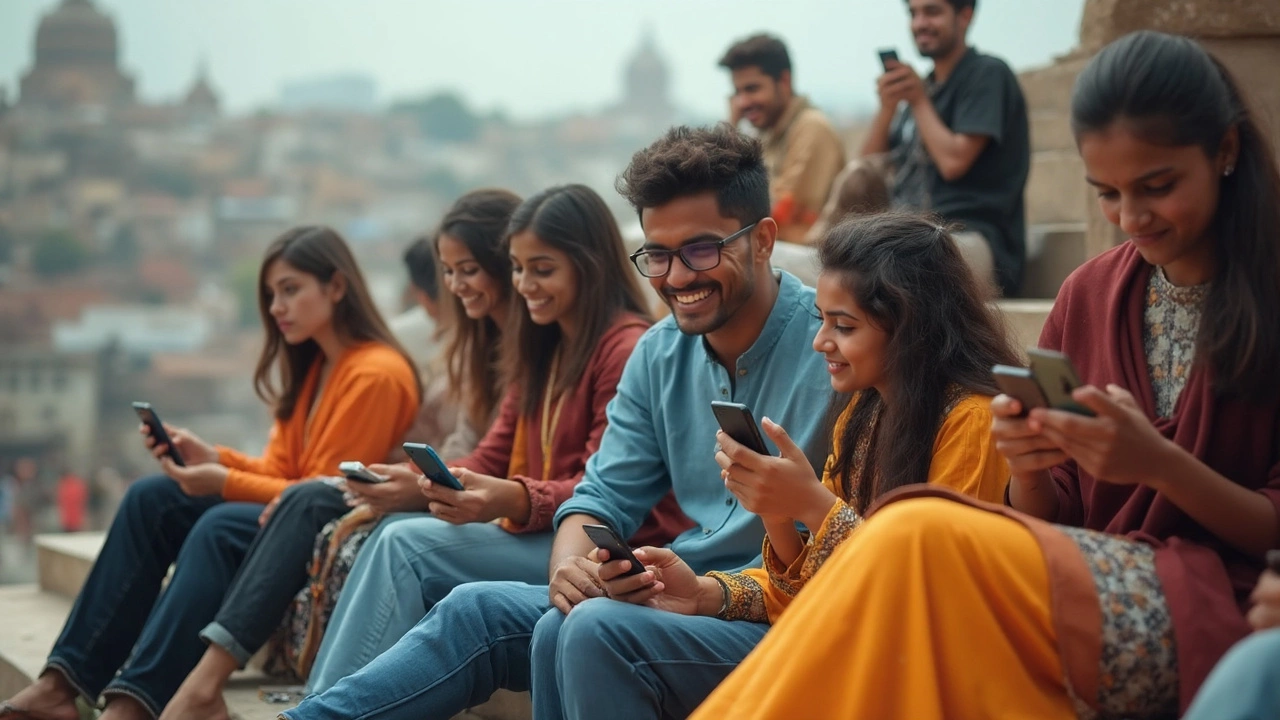
Most people think you need a fancy laptop to write code, but honestly, your phone is way more capable than you might believe. Phones today have enough power to run full code editors, compile programs, and even talk to external servers — not bad for something that fits in your pocket.
So, why bother coding on a phone? Maybe your laptop isn’t always with you, or maybe you just want to sneak in practice during a commute. Plus, learning to code on a phone can boost your adaptability; once you get the hang of these smaller screens and touch interfaces, coding on a regular computer will probably feel easier.
If you’re just starting out, it’s simple: grab a code editor app, sign in, and start tapping away. There are loads of free apps for Python, JavaScript, and even web development. Some let you run code right in the app, which is perfect if you want to see instant results.
- What You Need to Start Coding on a Phone
- Top Coding Apps that Actually Work
- What’s Possible (and What’s Not)
- Tips for Making Mobile Coding Easier
What You Need to Start Coding on a Phone
You can start coding with a phone in minutes if you gather the right tools. The basics are simple, but getting the setup right can make things way smoother. You don’t need the latest device, but a semi-modern phone (from the last couple of years) will help a lot. Both Android and iPhone work, and internet access lets you download apps or sync your files to the cloud.
Here’s what you really need:
- Good code editor app: Options like Dcoder, Pydroid 3 (Android), Juno (iOS), or even Visual Studio Code on devices that support it. These apps let you actually type, save, and run code.
- File management: Apps like Google Drive, Dropbox, or built-in files apps are helpful for saving or moving your projects.
- Keyboard: Typing on a phone screen can get frustrating, especially with symbols. A compact Bluetooth keyboard makes things much easier, especially for longer projects.
- Battery and charger: Coding can drain your battery. A portable charger isn’t a bad idea.
For beginners just starting out on their journey of coding with phone, picking an app that has built-in tutorials or sample code makes it easier to learn without getting lost.
Just how much power are we talking, compared to a laptop? Check this out:
| Device | Average RAM | CPU Speed |
|---|---|---|
| Modern Smartphone (2024) | 8 GB | 2.84 GHz (Octa-core) |
| Entry-level Laptop (2024) | 8 GB | 2.4 GHz (Quad-core) |
Most current phones are just as good as a basic laptop for typical coding. You might not want to build super complicated software on your phone, but it’ll handle Python scripts, web projects, and even some full apps without trouble. Just pick your setup and jump in.
Top Coding Apps that Actually Work
Your app store is packed with coding apps, but most people have no clue which ones are legit for real programming. Some are built for quick practice, others can handle entire projects. Here’s the lowdown on tools that help you do actual coding with phone rather than just solving quizzes.
Let’s start with Pythonista (iOS) and Pydroid 3 (Android). Both let you write and run Python code, including using popular libraries like NumPy or Matplotlib. They’re especially handy for beginners because you don’t need a computer to start seeing results. Pythonista even has its own UI editor so you can build small apps with buttons and sliders right on your phone.
If you’re more into web stuff, Dcoder and Juno are solid picks. Dcoder has support for over 50 programming languages and a cloud-based compiler so you can code in Java, C++, JS, and more. Juno is good for Jupyter notebooks on the move—think data science on the train.
Want to run a mini IDE? Check out AIDE (for Android). You can build entire Android apps with it, see your UI, edit files, and even run your code. It’s one of the few apps that feels close to real dev work on a phone, especially if you can connect a Bluetooth keyboard.
Don’t trust just my word for it. Look at what The Verge wrote when reviewing mobile coding:
"Learning to code on the go opens up tech to a wider crowd, especially for those who can’t afford a laptop or want to practice whenever inspiration hits."
If you’re looking for basic HTML/CSS/JS practice, Grasshopper by Google is a hit. It’s tailored for beginners and uses small examples and interactive puzzles.
Here’s a quick comparison of some top apps:
| App Name | Platform | Best For | Free? |
|---|---|---|---|
| Pythonista | iOS | Python scripting, UI | No |
| Pydroid 3 | Android | Python learning & scripts | Yes, with paid features |
| Dcoder | iOS & Android | Multiple languages | Yes, limited free |
| AIDE | Android | Building Android apps | Yes, with in-app purchases |
| Grasshopper | iOS & Android | JS fundamentals | Yes |
Keep this table handy if you’re not sure where to start; it’s all about picking the code editor that matches your style and your phone. If you’re after serious projects (even just practicing for class), make sure the app can export code or sync to a service like GitHub for easy backup and sharing.

What’s Possible (and What’s Not)
It’s cool how much you can do when coding with phone these days, but there are still limits compared to working on a laptop. Let’s split up what’s actually doable and where you’ll probably run into headaches.
First, the good news: you can run lots of real code, make websites, and even submit assignments straight from your phone. Mobile code editors like Dcoder, Pydroid, and Juno let you write and run scripts in languages like Python, JavaScript, C++, and more. Want to mess with HTML and CSS? Specialized apps let you preview your changes instantly, almost like a mini-browser on your phone. For beginners, most of the basics—loops, functions, and simple logic—work just fine.
Even some pro tasks are possible. You can push code to GitHub, review pull requests, and write commits. Collaboration tools like GitHub Mobile or Replit’s app have made it a lot easier to stay in sync with team projects right from your phone, which wasn’t a thing even a few years ago.
- Text-based programming, like Python, JavaScript, C, C++, and Java
- HTML, CSS, and simple web pages (great for learning or quick site tweaks)
- Pushing and pulling code from remote repos
- Running scripts and seeing outputs, as long as they aren’t super resource heavy
- Taking coding classes or practicing code challenges (like on Sololearn or Grasshopper)
But let’s get real for a second—coding on a phone isn’t perfect. The screen is tiny, and typing longer chunks of code can get frustrating fast. Big, complex projects (like building an entire app or managing large codebases) just aren’t practical. That’s not just about coding; even things like using version control or complicated libraries can get tricky. Plus, a lot of pro tools—like running local servers or using advanced IDE features—either don’t exist on mobile or run super slow.
| Possible on Phone | Impractical/Not Possible |
|---|---|
| Learning syntax and basic algorithms | Heavy data processing tasks |
| Small to medium scripts/programs | Building and testing large apps |
| Basic debugging and error checks | Complex version control operations |
| Push/Pull requests on Git | Advanced IDE debugging tools |
| Online coding challenges | Running local servers and VMs |
The bottom line? Phones are awesome for learning, quick edits, or reviewing code, but you’ll want a full computer for real-world projects, collaborating on huge teams, or anything that eats up lots of RAM. Don’t be surprised if you find yourself switching between your phone and laptop, just to stay productive and sane.
Tips for Making Mobile Coding Easier
Coding on your phone definitely takes a little getting used to, but some tips can spare you a ton of frustration. The first thing to nail down is your keyboard setup. Most stock phone keyboards aren't made for code—missing those handy brackets, tabs, and symbols. If you’re serious about coding with phone, install a specialized coding keyboard like Hacker's Keyboard (Android) or use an external Bluetooth keyboard for smoother typing.
Organization helps, too. Use cloud storage services like Google Drive or GitHub apps so your code’s always backed up, even if your phone hits the floor. Plus, version control from your phone? Totally possible and surprisingly smooth with dedicated apps.
Everyone dreads typing out long lines on tiny screens. Try these hacks to keep your workflow pain-free:
- Turn on auto-complete in your editor. Saves time and reduces typos.
- Learn shortcut gestures in your favorite coding app; for example, some allow swiping for quick symbol access.
- Split your screen if your phone supports it, so you can Google something or watch a tutorial while coding.
- Dim your screen or use dark mode to save battery and your eyes during long sessions.
- Set up notification blockers during your coding time. Getting pinged every few seconds kills your flow fast.
Tracking your progress helps keep you motivated. Plenty of beginner-friendly coding apps, like SoloLearn, actually show stats for how many days in a row you’ve coded, quizzes you’ve completed, and even how you stack up against other users. Just check this sample daily usage data:
| App | Average Daily Coding Time (mins) | Users With 7-day Streak |
|---|---|---|
| SoloLearn | 18 | 220,000+ |
| Grasshopper | 13 | 150,000+ |
| Enki | 10 | 90,000+ |
One last tip—don’t try to build huge projects on your phone. It’s perfect for quick practice, fixing small bugs, or learning new concepts while on the move. Once you’re hooked, switching to a laptop for big projects makes way more sense, but you’ll already have the basics down. So go ahead, treat your phone like a real coding tool. You’ll be surprised by just how much you can get done in a few spare minutes each day.
